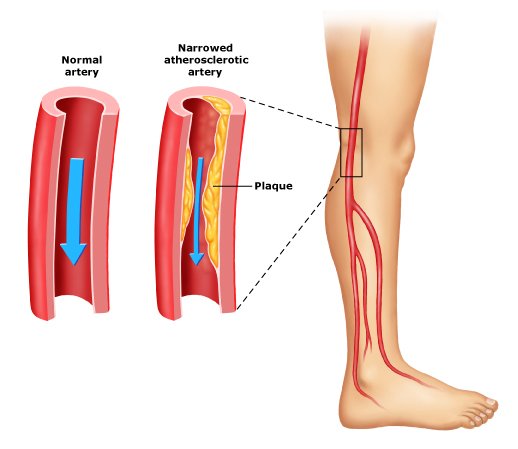Claudication / Peripheral Arterial Disease
We can diagnose and treat pain in the calf and thighs.
We can diagnose and treat pain in the calf and thighs.
Claudication, or Peripheral Arterial Disease, is a medical term referring to impairment in walking, or pain, discomfort, numbness, or tiredness in the legs that occurs during walking or standing and is relieved by rest. The perceived level of pain from claudication can be mild to extremely severe.
Claudication is most common in the calves but it can also affect the feet, thighs, hips, buttocks, or arms. The word claudication comes from the Latin claudicare meaning ‘to limp’.
Individuals with intermittent claudication may have diabetes — often undiagnosed. Another cause, or exacerbating factor, is excessive sitting (several hours), especially in the absence of reasonable breaks, along with a general lack of walking or other exercise that stimulates the legs.

Consider a screening to see if you are at risk.
Claudication that appears after a short amount of walking may sometimes be described by the number of typical city street blocks that the patient can walk before the onset of claudication. Thus, “one-block claudication” appears after walking one block, “two-block claudication” appears after walking two blocks.
Noninvasive vascular testing usually in the form of ultrasound does not establish the diagnosis, but is useful in discussing treatment options.
Most patients with claudication do not need surgery. The first line of treatment is risk-factor modification. Patients who are above their ideal weight will frequently be able to walk farther simply by losing excess pounds. Cessation of cigarette smoking will prevent progression of arterial blockage and can improve walking distance. Control of diabetes, hypertension and elevated lipids frequently requires drug therapy managed by your primary physician. Exercise alone is an effective form of therapy. Studies have shown that a supervised exercise program, such as found at some hospitals, can significantly improve walking.
The next line of therapy is drug treatment. Cilostazol, or Pletal, significantly improves the walking distance in 50-60% of patients.
If symptoms do not respond to standard life-style or drug therapy, noninvasive studies such as ultrasound or MR angiography may lead to more invasive options. Surgery for intermittent claudication generally follows a detailed discussion between the patient and the surgeon about the risks and benefits of any intervention.
Click on the image above to view and download the PDF about Peripheral Artery Disease (PAD), its causes, symptoms, and treatment.
View information about Claudication provided in conjunction with the Society for Vascular Surgery, of which Dr. Bunnell is a recommended specialist. Visit: SVS information about Peripheral Arterial Disease/Claudication.
When you are ready to discuss treatment options, we look forward to scheduling a consultation with you.
Pinellas Vascular is ready to assist you with your vascular condition or concern. Send us a message and we will get back with you quickly.